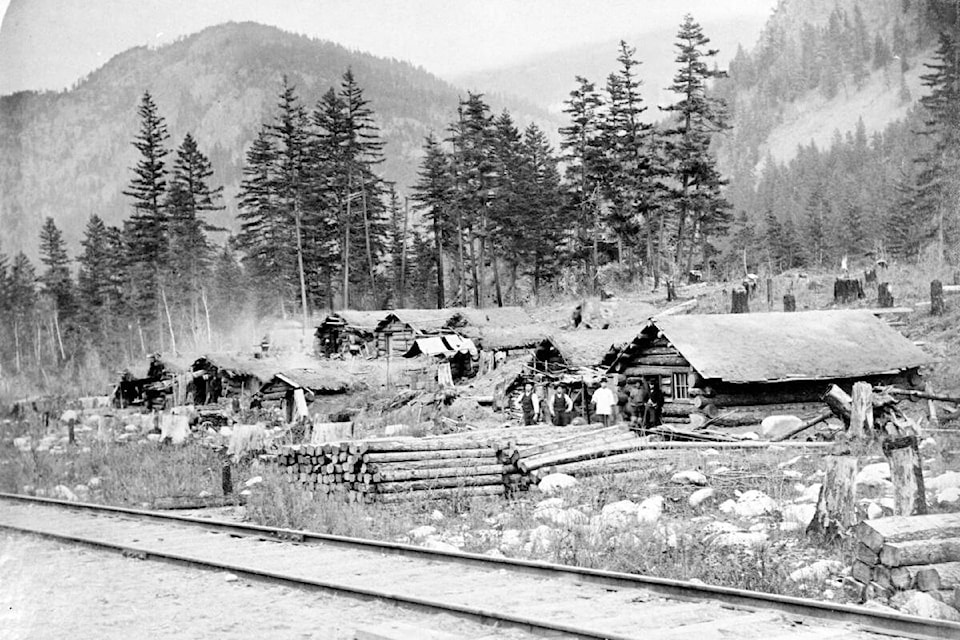“Are you going to write about it in the paper? Somehow I have a feeling you will.”
It all started with a discussion between my son and me, about the station names along the CP and CN lines between Kamloops and North Bend, with which he is becoming very well acquainted. They’re at intervals along both lines, and while some of the names are easily explained, others are not so quickly parsed out.
On the CP line, for example, we have Kamloops, Savona, Ashcroft, and Lytton, where there used to be actual train stations in actual communities, the names of which aren’t difficult to research if you don’t already know them. Others, however, are less obvious, sometimes considerably so. Benledi, anyone? Chuwels? Dodge? Nepa? Toketic? Drynoch? Keefers?
Well. I’m always up for a good local history mystery, and my middle name is “Research” (it isn’t, actually, it’s Heather, but Research works just fine), and I needed a distraction, so off I went, raiding my bookshelf for a dozen or so books on area history and settling in to see what I could find.
A lot of very interesting rabbit holes, was the answer, as is so often the way with history: you start off looking for one thing and there you are, two hours later, somewhere else altogether but having thoroughly enjoyed the journey, surrounded by books with little bits of paper stuck out of them to mark pages. They were piled around my armchair in the spot that the cat usually uses to launch himself into my lap, and he was Not Pleased by the interruption to his routine, let me tell you.
I also have to give a huge tip of the hat to the internet. I don’t think I can overstate what a boon it is to amateur historians such as myself, in terms of making otherwise inaccessible reference works and information available at the click of a few buttons. For example, I don’t have a copy of James Teit’s landmark The Thompson Indians of British Columbia (1900), but the complete book is available online, and I was able to use it to (I think) track down the origin of one of the more puzzling station names: Nepa, just west (south) of Black Canyon near Ashcroft.
In his book, Teit gives the names of Thompson (Nlaka’pamux) villages along the Thompson and Fraser Rivers, and he notes a settlement called Snapa’ (meaning “burnt place”) at or near the area the whites called Black Canyon. There’s a place on the CP line called Black Canyon, but near it there is Nepa, and I don’t think it’s too much of a stretch to connect that with Snapa’.
More Googling helped me track down the origin of Keefers, west of Kanaka Bar, and Benledi and Chuwels, near Kamloops. By this time I had got others interested in my quest, and I was told that “Toketic” is the Chinook Jargon word for “pretty”, while Dodge was named after Ed Dodge, the COO of CP Rail in the mid-1980s. (While most of the station names are from the early days of CP, there are a few more modern ones.)
The memoirs of Bessie Smith — Widow Smith of Spences Bridge — furnished me with the meaning behind Drynoch, and most of the rest I knew, although that didn’t stop me from learning more about them. However, I was left with two more (besides Nepa) that I couldn’t track down or confirm: Munro (between Cherry Creek and Tunkwa; possibly a CP engineer named John W. Munro) and Chaumox (between Keefers and North Bend; possibly Chinook Jargon or an Anglicized version of an Nlaka’pamux word). I’ll keep digging.
“Are you going to write about it in the paper?” my son asked, as we were backing-and-forthing with various theories and information. “Somehow I have a feeling you will.” Oh yes, and there’s more to come. Never let a good piece of research go to waste, that’s my motto. And Research, as you all know, is my middle name.
editorial@accjournal.ca
Like us on Facebook and follow us on Twitter
